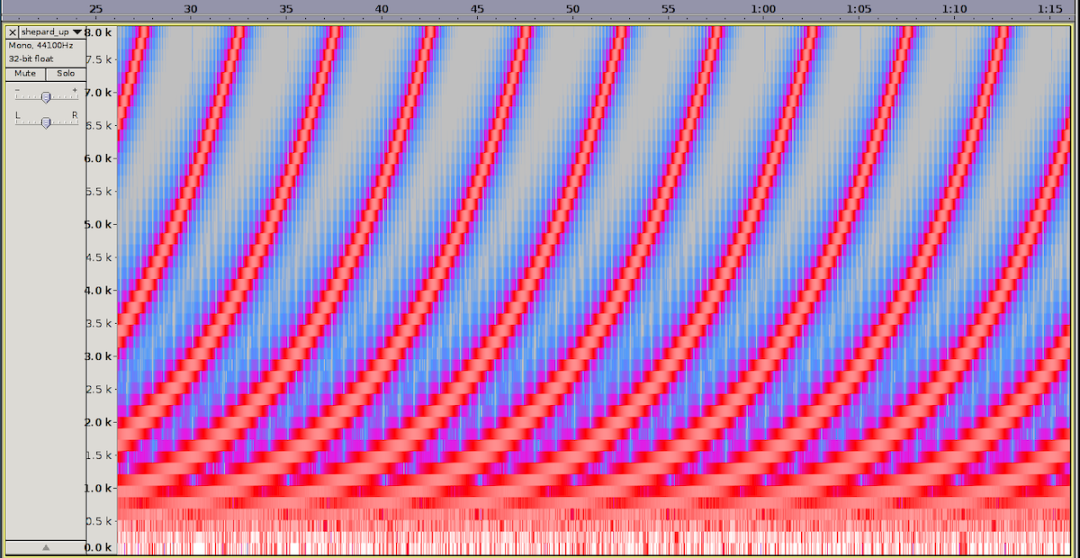Some of the effects we employ in sound design, mixing, and even songwriting take advantage of our perception of sound—a branch of science known as psychoacoustics. The Shepard tone is a prominent example of how our ears can trick us!
What Is the Shepard Tone Effect?
The Shepard tone is colloquially referred to as an auditory illusion. The effect is an endless ascension of pitch, seemingly rising to some sort of resolution but never getting there. Many people call it the sonic equivalent of a barber pole. At best, it’s unsettling to hear.
Even if you’ve never defined it by name, you’ve most certainly heard the Shepard tone; more than likely, in a film. The tension it creates is undeniable, which is why sound designers and composers rely on this powerful illusion to highlight dramatic moments on screen.
How Does the Effect Work?
Cognitive scientist Roger Shepard discovered the illusion 1964. At the most basic level, the effect starts with a set of sine waves at the same pitch, layered together across every octave. A Shepard tone doesn’t have one fundamental frequency.
To create the “movement” that we associate with the sound, the sine waves need to ascend the chromatic scale. This is also why you’ll sometimes hear the term Shepard “scale” used to describe the phenomenon.
How Is Shepard Tone Created?
The key to creating the effect is varying the volumes between octaves. Let’s take a step back and visualize an ascending chromatic scale; now picture that scale copied and pasted in your piano roll in multiple octaves. We’re almost there! Now, imagine certain octaves going from soft to loud, and others from loud to soft. That’s how we create a Shepard tone, or scale.
Each step of the scale fades in and out with the others, and the result is a smooth transition from note to note and octave to octave. Our brain fails to perceive the “loop,” and instead interprets the sound as a constantly ascending scale with no resolution. You can also reverse the order and create a never-ending descension, too. Feeling dizzy yet?
How to Use the Effect to Create Tension
As it is, the Shepard tone is a naturally tense and eerie sound. It definitely has a science fiction-esque quality to it, sort of like the classic hovering UFO sound we’ve all heard countless times. If you’re a sound designer, post-production engineer, composer, or producer, you’ll want to give the Shepard tone a try anywhere the film or song needs some drama.
The tension is inherent, so it’s up to you when and how to employ the effect. Even if you never find the opportunity to use it in your productions, the Shepard tone is one of those weird psychoacoustic phenomena illustrating the unique interaction between our ears and our brain—fun stuff!
The ending of “Echoes” by Pink Floyd features a prominent descending Shepard tone. Check it out!
